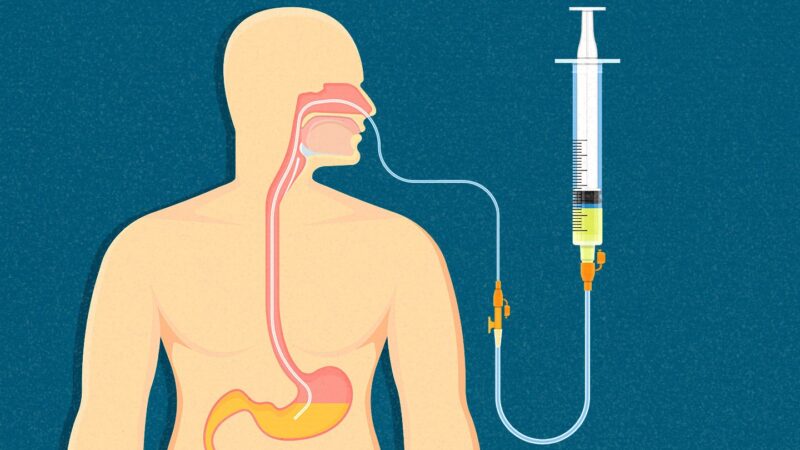When a person is unable to swallow, doctors may insert a feeding bag and tube to provide nutrition. Inability to swallow, an eating disorder, or other nutritional problems might necessitate the use of a feeding tube.
Nasogastric (NG) tubes are put temporarily via the nose to provide nutrition to the stomach. When people need help eating for an extended period of time, they can receive a tube inserted in their stomach (gastric or G tube) or small intestine (jejunostomy or J tube). Percutaneous endoscopic gastrostomy is a typical minimally invasive surgical method used to implant G tubes (PEG). A PEG tube is another name for this device.
What a Feeding Tube Is For
A feeding tube is not just for those with dysphagia (a condition that makes it difficult to chew and swallow) to receive nourishment. The most frequent cases when a feeding tube is required are:
- Providing nourishment: A feeding tube can be used to administer liquid food. The body can get the carbs, protein, and lipids it needs to function properly thanks to tube feeding, also known as enteral nutrition.
- Hydration can be maintained without the use of intravenous (IV) fluids if water is administered via a feeding tube.
- The administration of medication: a feeding tube may be used to administer many different types of medication, including pills and tablets. It’s possible to take their contents orally by powdering them and mixing them with water.
- The stomach can be decompressed with the use of certain feeding bag. Gas can be removed through suction from the tubes, alleviating distention (swelling) and bloating.
- Emptying the stomach: Undigested food in the stomach can lead to sickness, vomiting, abdominal discomfort, and bloating. Fluids and food debris can be extracted using suction.
Positive Effects of Tube Feeding
Eating healthy foods can help you avoid being sick in the first place and speed up the recovery process when you do become sick.
When these conditions apply, enteral feeding can be a viable treatment option:
- Struggling to chew and swallow food
- suffering from anorexia
- Disabled to take in adequate fluids
- Struggling to keep a healthy weight
A better health-related quality of life is possible with the use of a feeding tube. Although it might take some time to adjust, the benefits to your health and well-being could be well worth the wait. Find out more about how tube feeding might help alleviate your discomfort.
Enhanced vitality and muscle power
If you are unable to consume enough calories each day, you will likely feel fatigued, listless, and unmotivated to accomplish even the simplest of activities. By supplying the body with the nutrition it needs, central feeding helps people maintain their health, strength, and muscular mass. Getting back on a regular caloric intake schedule may give you a renewed sense of energy and drive to get back to your regular routine.
Increased resistance to disease
Malnutrition can weaken the immune system, which can lead to infections and other health problems. Reduced immune function can be a result of poor gut health, which can result from not getting enough of certain nutrients. Therefore, you can be vulnerable to developing new diseases. Enteral tube feeding has the critical side effect of keeping your immune system robust, which is crucial for fending off infections.
Decreased anxiety and improved self-assurance
Starting enteral treatment early has various advantages. Its benefits go beyond ensuring that you maintain your current weight. It’s also important to make sure you have enough stamina to go through the day and that your immune system stays in good shape. Confidence issues are common among those whose health prevents them from drinking or eating normally. They could worry that their body isn’t responding the way it should, leading to feelings of insecurity.
In reality, hundreds of thousands of Americans rely on some form of tube feeding on a regular basis. Enteral treatment can help you feel secure and encouraged to live your life to the fullest, despite the fact that it may appear intimidating at first. The mental and physical strain of trying to force food down your throat is eliminated when you have a feeding tube inserted.
Methods of Insertion for Feeding Tubes
The process of inserting a feeding tube with kangaroo feeding bags is quick and painless. Some people who would be awake throughout the treatment need anesthesia, although this is rarely the case for critically sick patients who are sedated and require intense care.
The endoscope enters the stomach through the mouth. The endoscope’s illuminated tip shows the doctor just where to make a tiny incision. About one inch in length. After that, the G tube is inserted and fastened.
The tube’s lid can be removed so that liquids and food can be given directly to the stomach. In just a few days, if you take proper care of your tube, the incision will have healed completely around it.
An ointment can be used to soothe skin that has been irritated by fluid loss. In most cases, just washing the area with soap and water will be sufficient.
Conclusion
When someone is recovering from an illness, accident, or surgery, enteral feeding is commonly employed as a temporary measure. Patients who have been fed enterally typically resume their previous eating habits.
Long-term enteral feeding may be necessary for those with mobility issues or children with physical limitations.
Critically sick patients or the elderly who are unable to meet their own nutritional demands may benefit from receiving enteral nourishment to help them stay alive. Ethical considerations about the use of enteral feeding to extend life must be made on a case-by-case basis.
It’s normal to feel anxious about the prospect of learning to adapt to internal feeding, either for yourself or a loved one. Your medical team, including nurses, dietitians, and home health aides, can aid in the transition to a new lifestyle.
